How many people have died from Kinshasa flooding?
April 7, 2025 | Kinshasa, DR Congo — At least 33 people have been confirmed dead and dozens more injured after torrential rains triggered massive flooding across the Congolese capital, Kinshasa, over the weekend. The deluge, which struck overnight from Friday to Saturday, has left a trail of destruction in its wake, with thousands of homes submerged, key infrastructure paralyzed, and an entire city struggling to recover.
The flooding, described as among the worst in decades, came after nearly 48 hours of relentless rain that overwhelmed the city’s already strained drainage systems. The Congo River, one of the world’s largest by discharge volume, reached its highest level in over 60 years — peaking at more than 6.20 meters above normal — resulting in the overflow of major tributaries including the N’djili River.
Also, read about Kampala Floods
A City Underwater
Kinshasa, home to more than 17 million people, witnessed near-apocalyptic scenes as water swept through homes, roads, and marketplaces. According to city officials, nearly half of Kinshasa’s 26 communes have been affected, with some of the hardest-hit areas being the densely populated and impoverished districts of Ngaliema, Selembao, and Limete.

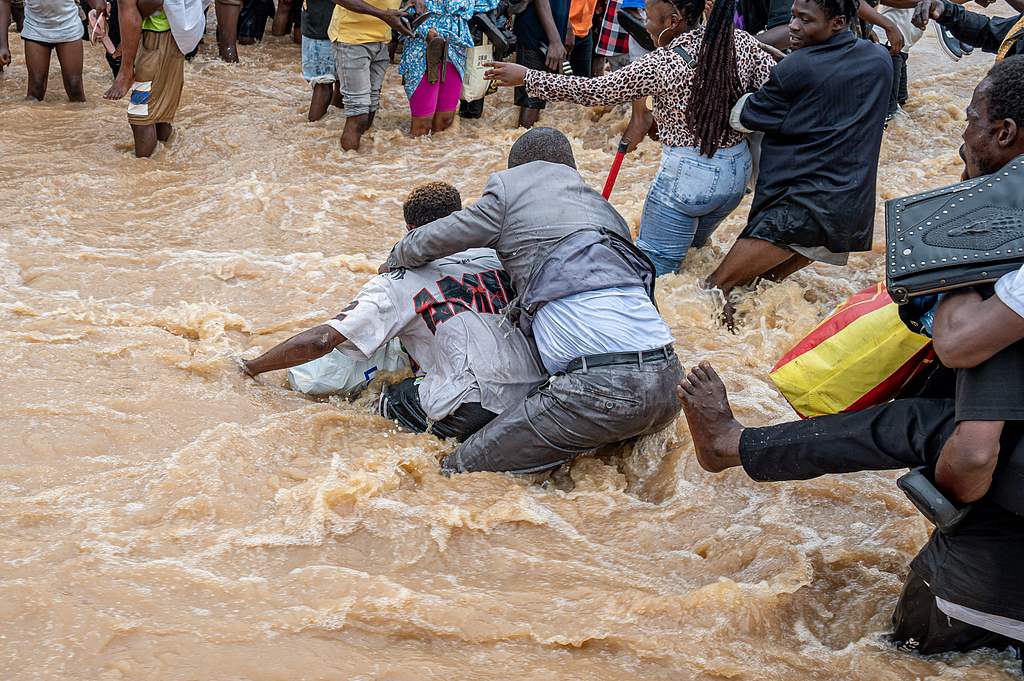
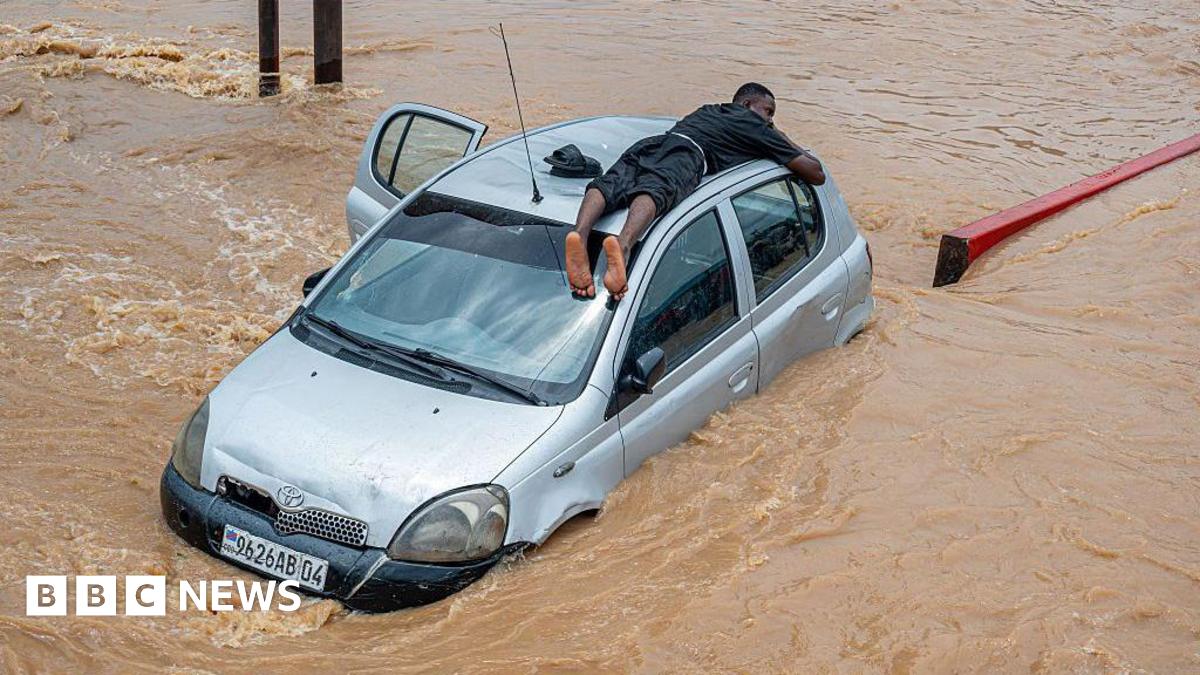
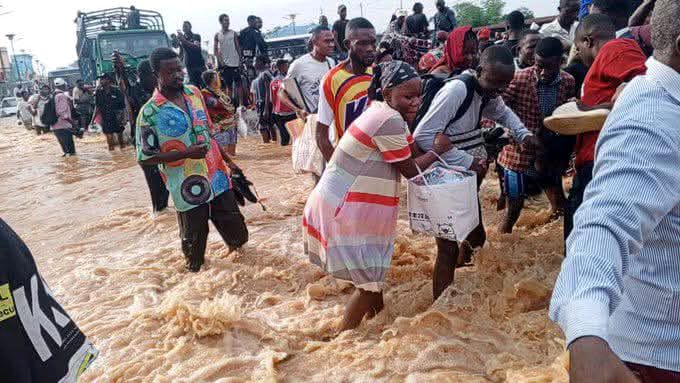
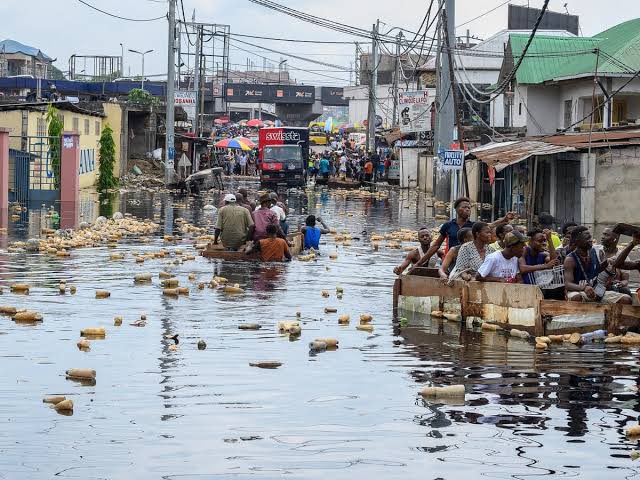

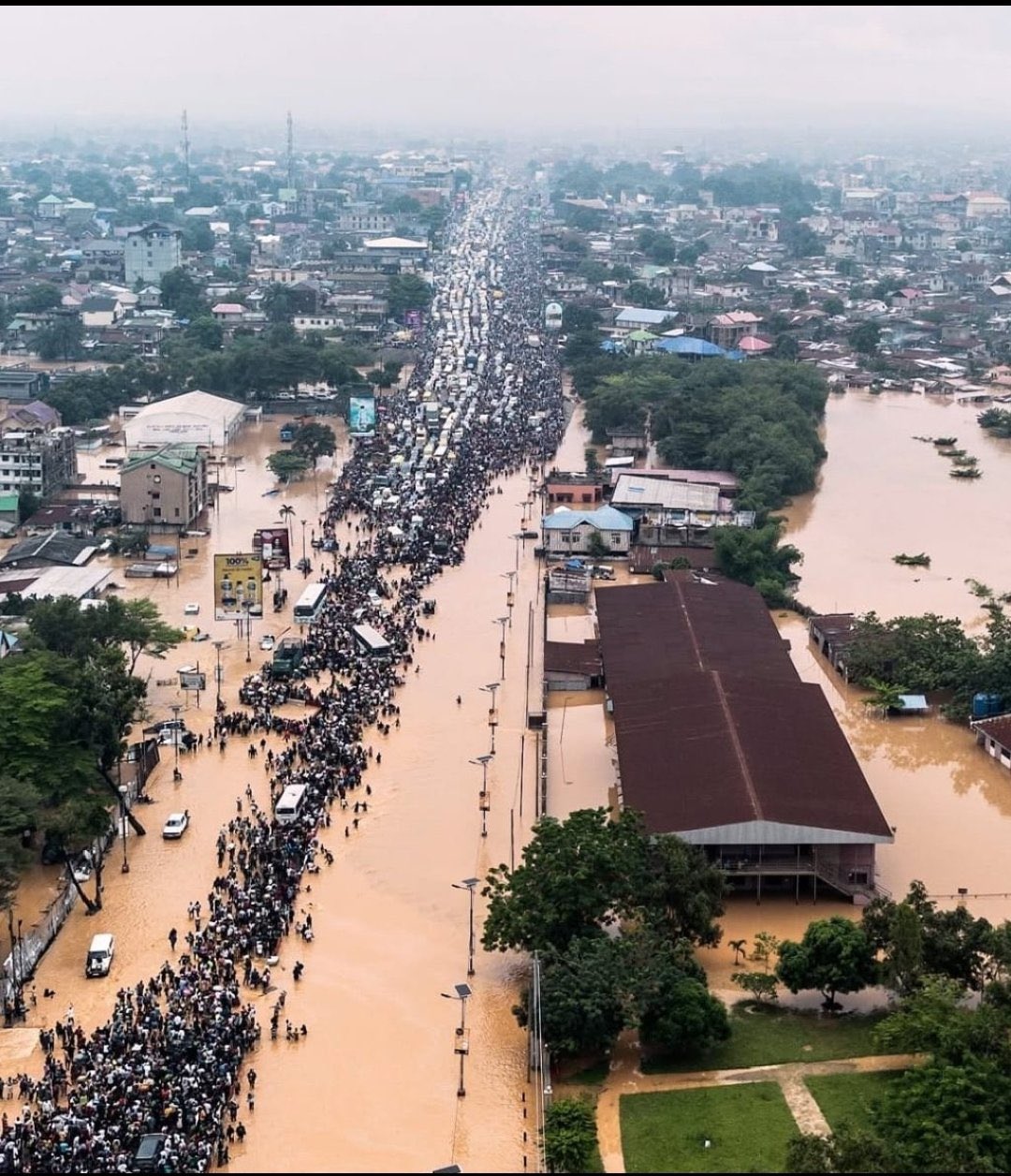
Emergency response teams have been deployed to aid in search and rescue operations, but authorities admit that access to several neighborhoods remains severely limited. “We are seeing entire communities submerged,” said General Sylvano Kasongo, head of the Kinshasa police. “There are families trapped inside their homes and we are working with boats and helicopters to reach them.”
Infrastructure Crippled
Major transportation arteries have also been devastated. The Boulevard Lumumba — a key road connecting downtown Kinshasa to N’djili International Airport — has been rendered impassable. The National Highway No. 1, which links the capital to the strategic port of Matadi, was also cut off, further isolating the city and hampering relief efforts.
Water treatment facilities along the N’djili and Lukaya rivers were overwhelmed, leading to severe disruptions in potable water supply across Kinshasa. “We are now facing a double crisis — flooding and water scarcity,” said Eustache Muhanzi Mubembe, Minister of Hydraulic Resources and Electricity. “Our teams are racing against time to restore clean water services.”
Climate Crisis and Urban Challenges
Flooding is not new to Kinshasa, but experts warn that the frequency and severity of such events have worsened due to climate change and rapid, unregulated urban expansion. The city, built along low-lying riverbanks, suffers from poor drainage and waste management systems. Many informal settlements, where residents build makeshift homes without official oversight, are particularly vulnerable.
“The capital is expanding faster than infrastructure can keep up,” said Henri Bumba, an urban planner based in Kinshasa. “When you combine that with extreme weather patterns, the result is catastrophic.”
Government Response and Warnings
President Félix Tshisekedi has expressed condolences to the families of the victims and has called for a national emergency response. The government has mobilized military engineering units and civil protection teams to assist with evacuations and reconstruction. Humanitarian agencies, including the Red Cross and Médecins Sans Frontières, are also coordinating relief efforts.
Authorities have issued alerts for continued rainfall in the northern and northeastern provinces over the coming days. Meteorologists from the National Weather Agency warned that saturated soil and swollen rivers increase the risk of further flooding and landslides, particularly in hilly districts surrounding the capital.
International Attention
The United Nations Office for the Coordination of Humanitarian Affairs (OCHA) has announced the dispatch of an emergency response team to assist local agencies. “What is happening in Kinshasa is emblematic of the broader climate vulnerabilities facing Central Africa,” said UN spokesperson Fatiha Serour. “There is an urgent need for infrastructure investment and sustainable urban planning.”
As the floodwaters slowly recede, the scale of the damage is becoming clearer. Tens of thousands have been displaced, hundreds are injured, and the death toll may continue to rise as rescue teams reach previously inaccessible areas.



